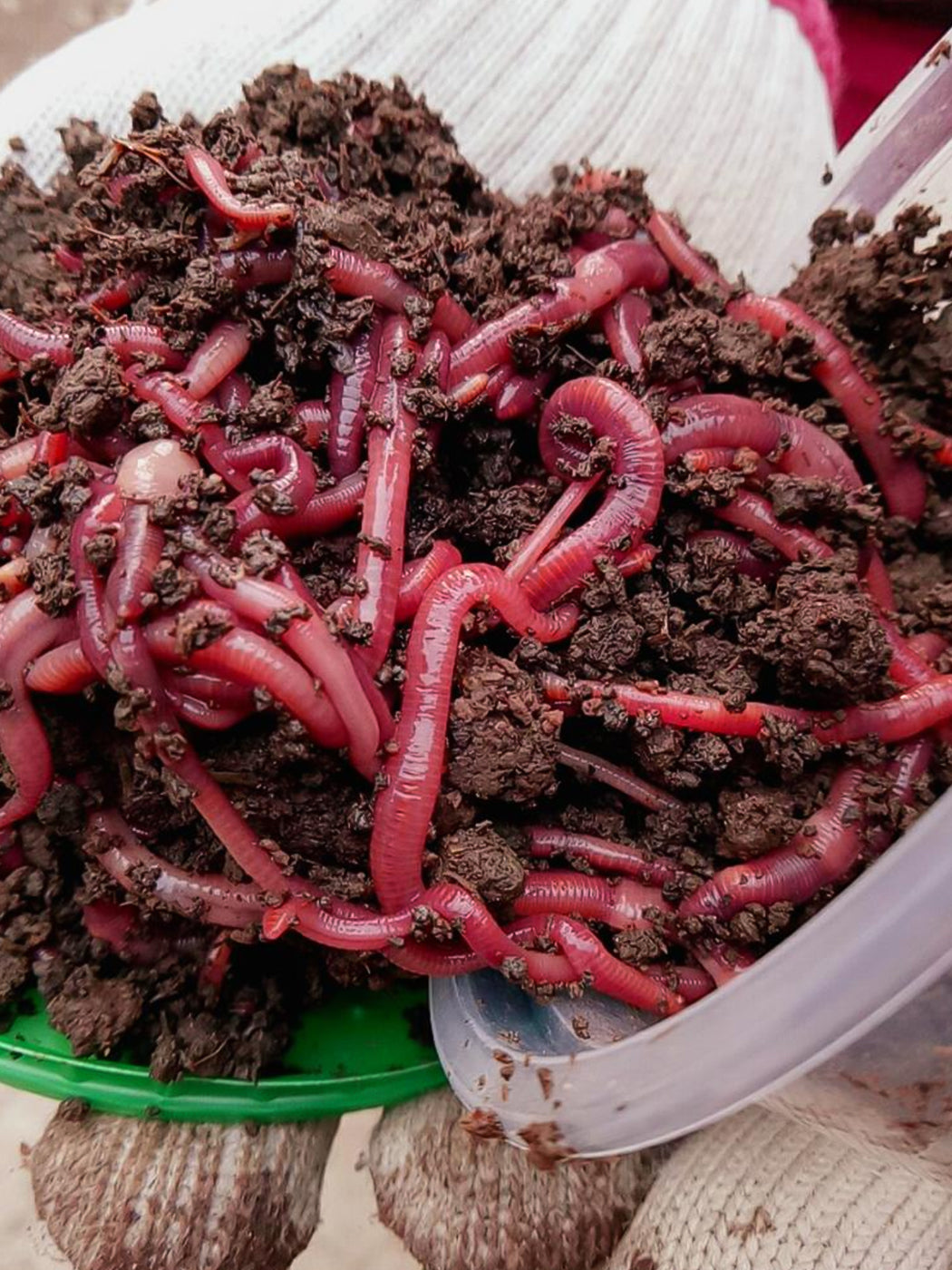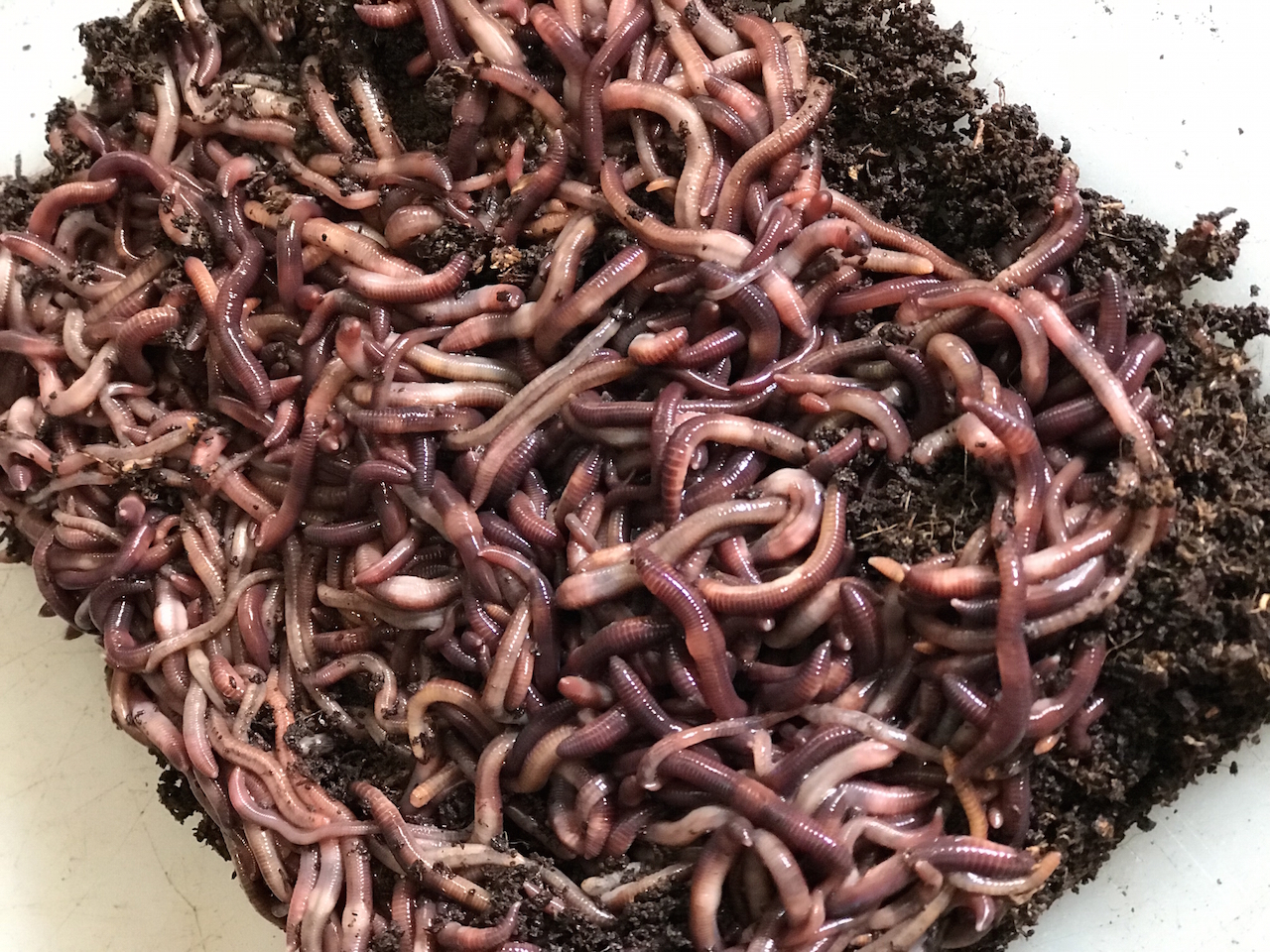Red Wiggler Express: High-Quality Worms Delivered Fast
Red Wiggler Express: High-Quality Worms Delivered Fast
Blog Article
Unlock the Keys of Red Wigglers: Your Guide to Composting Success
The assimilation of red wigglers right into composting methods presents a significant opportunity for boosting dirt wellness and advertising sustainability. Recognizing their demands and habits is critical for enhancing their possibility, from setting up an appropriate worm bin to feeding them the right products.

What Are Red Wigglers?
(Red Wiggler Express)Red wigglers, medically called Eisenia fetida, are a species of earthworm largely made use of in composting because of their exceptional ability to decompose raw material efficiently. These worms are characterized by their reddish-brown coloration and a fractional body, normally gauging in between 3 to 4 inches in length. Unlike various other earthworm species, red wigglers flourish in rich, organic settings, making them suitable for vermicomposting systems.
Indigenous to North America, they are often found in rotting fallen leaves and compost heap, where they play a vital function in nutrient recycling. Their adjustment to living in a moist, aerobic setting allows them to take in large amounts of natural waste, simplifying right into nutrient-rich spreadings that boost dirt health.
Red wigglers reproduce swiftly, with a single worm efficient in generating a number of cocoons weekly, each having numerous hatchlings. This rapid reproduction rate adds to their efficiency in composting operations. They like temperatures between 60 ° F and 80 ° F, and their task degree increases considerably within this range, further helping in the decomposition process. Understanding the biology and behavior of red wigglers is important for maximizing their possibility in composting applications.
Advantages of Utilizing Red Wigglers
Harnessing the power of red wigglers in composting supplies various advantages that boost dirt wellness and promote lasting waste management. These impressive microorganisms efficiently damage down raw material, changing kitchen area scraps and backyard waste into nutrient-rich vermicompost. This finished product is incredibly valuable for plant growth, as it enhances soil framework, increases moisture retention, and boosts vitamins and mineral schedule.

(Red Wiggler Express)Furthermore, the existence of red wigglers in your composting system can speed up the composting procedure, creating premium compost in a portion of the time compared to traditional techniques. The castings generated by these worms are also teeming with valuable bacteria that further enhance the soil ecological community.
Establishing Your Worm Bin
Creating an efficient worm container is a simple procedure that can significantly improve your composting initiatives. Worm containers can be made from plastic storage bins, wooden boxes, or readily available worm containers.
Next, prepare the bed linen material, which offers as the worms' environment. A mix of shredded paper, cardboard, and coconut coir functions well, giving a comfortable environment for the worms.

Feeding Your Red Wigglers
To make sure the health and efficiency of your red wigglers, it is vital to offer them with a well balanced diet plan that meets their dietary needs. Red wigglers grow on a diverse selection of organic products, which not just supply essential nutrients however additionally promote reliable composting.
Begin by including kitchen area scraps such as veggie peels, fruit cores, and coffee grounds. Stay clear of citrus fruits, onions, and garlic, as these can be harmful to worm wellness. Furthermore, present shredded paper, cardboard, and dry fallen leaves to create a well-aerated atmosphere.
Feeding regularity ought to be checked; typically, worms can take in half their body weight in food weekly. It is critical to avoid overfeeding, as excess food can cause undesirable odors and draw in parasites. A good method is to include food in small quantities, enabling worms to refine it before introducing a lot more.
Maintaining moisture levels is additionally vital; the bed linen needs to perspire but not soggy. Be sure to frequently examine the temperature level and pH levels of the container to make certain an optimal setting for your red wigglers, eventually enhancing their composting effectiveness.
Harvesting and Making Use Of Garden Compost
A i loved this successful composting procedure with red wigglers finishes in the rich, dark garden compost called vermicompost, which can significantly boost soil wellness and plant growth. Harvesting this nutrient-dense product usually takes place every three to six months, depending upon the size of your system and the quantity of raw material being refined.
To harvest, gently different the compost from the worms and any kind of undecomposed products. One effective approach includes moving the materials of the bin to one side and including fresh bed linen and food to the void, motivating the worms to move. After a few days, the compost can be gathered from the opposite side.
It is necessary to utilize vermicompost properly to optimize its benefits. By integrating vermicompost right into your gardening program, you not just reuse organic waste however additionally create a successful ecosystem that supports sustainable horticulture techniques.
Conclusion
In recap, red wigglers work as remarkable allies in composting efforts, changing organic waste into nutrient-rich vermicompost (Red Wiggler Express). Their special organic characteristics and efficient waste processing abilities add significantly to sustainable gardening methods. By recognizing the optimum problems for their environment, feeding requirements, and compost harvesting techniques, gardeners can improve soil health and wellness and promote plant vigor. Embracing vermicomposting not just decreases landfill waste yet also promotes a much more ecologically liable technique to horticulture and resource administration.
Report this page